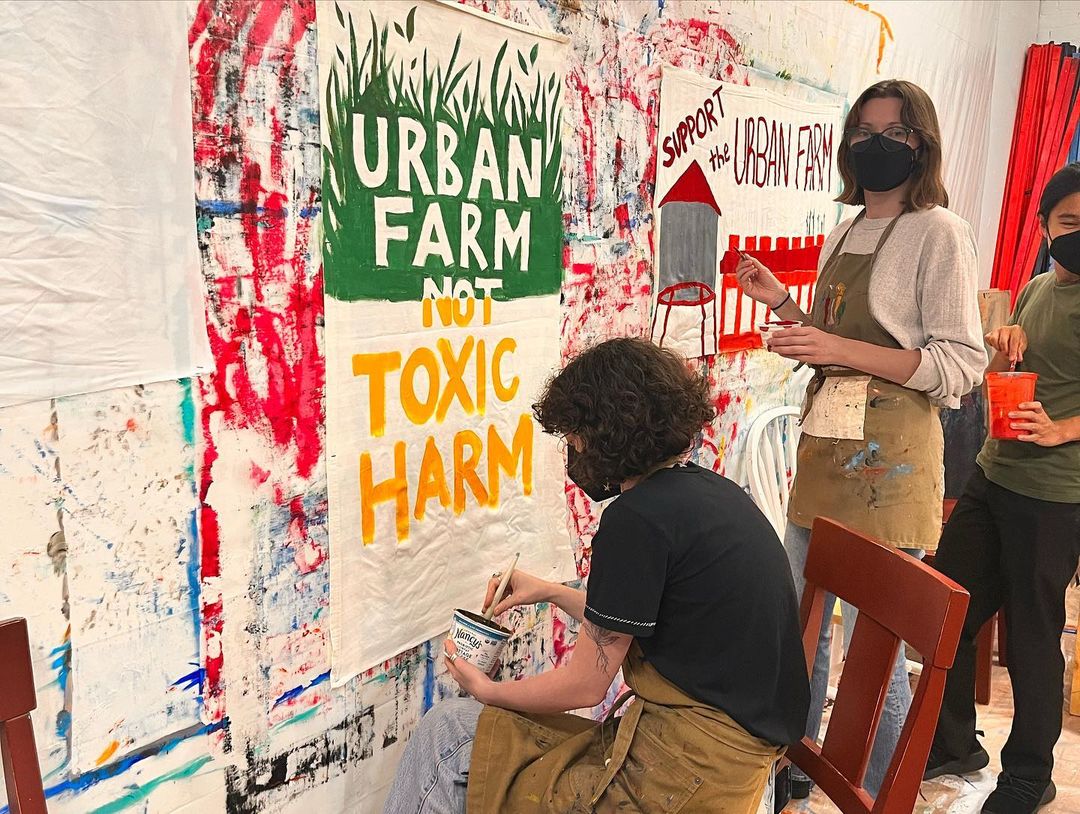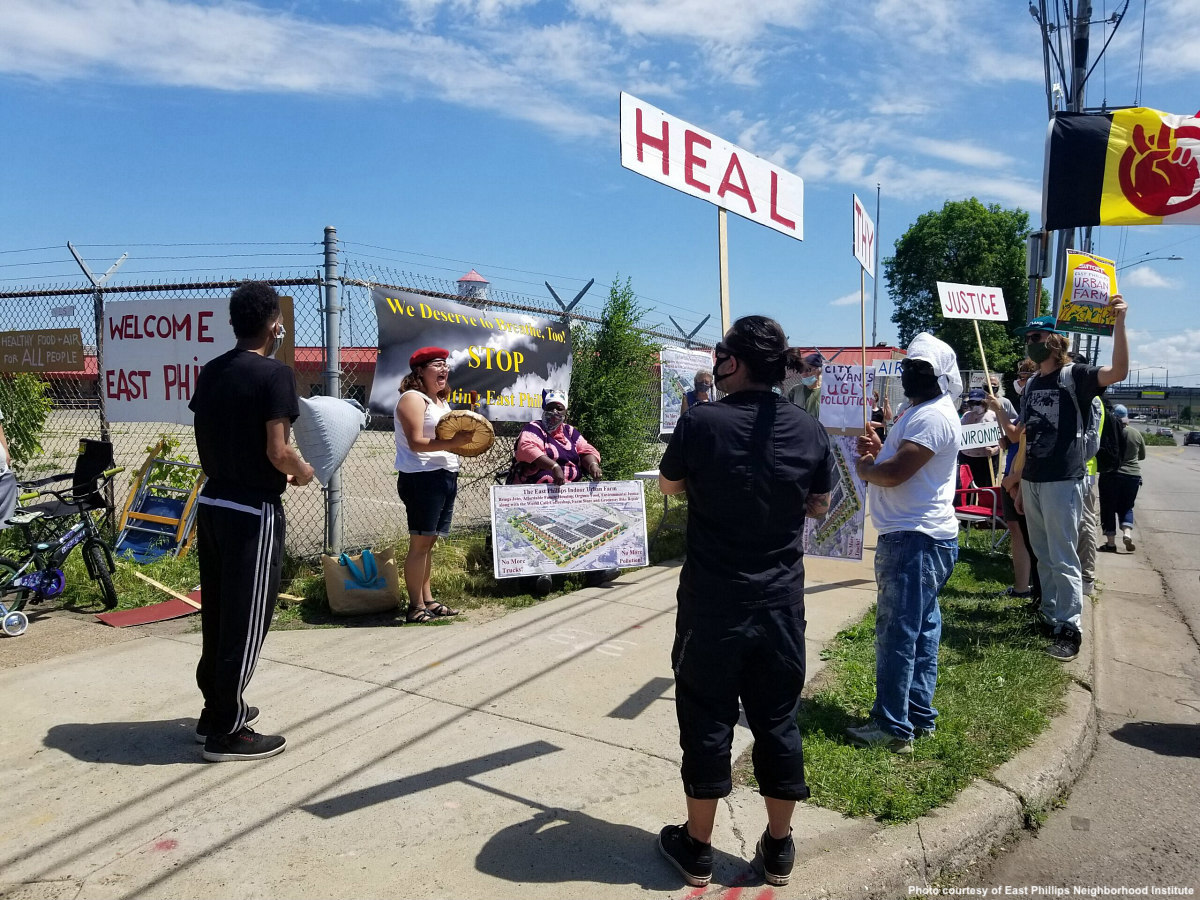Not far from where George Floyd was strangled almost three years ago, neighbors of the East Phillips neighborhood in Minneapolis are suffocating in a rather slower way. Children, adults, and even pets in the East Phillips neighborhood have some of the highest rates of asthma hospitalization, respiratory and cardiovascular diseases in the State of Minnesota. Environmental injustice is so glaring that it is difficult to grasp why progress has been so elusive.
East Phillips’ neighbors have long organized themselves and have come up with a plan to reduce the hazardous levels of pollution and prevent it from getting worse. But they are still waiting for the city to deliver on its environmental justice pledge. After eight years.
Between 2009 and 2011 the Environmental Protection Agency (EPA) carried out a cleanup of arsenic-laced contaminated soil in East Phillips after being designated a Superfund Site. The soil removal affected over 600 homes in the so-called South Minneapolis Residential Soil Contamination (“South Minn”) area, which is located in close proximity to a former pesticide manufacturing plant on the eastern edge of the Phillips neighborhood.
The pesticide plant made arsenic and/or lead arsenate-based grasshopper pesticides from 1938 through 1963. According to the EPA, “it is believed that during plant operations, the powder-like arsenic trioxide was periodically blown by the wind off site into the historic Phillips, Longfellow and Powderhorn neighborhoods in south Minneapolis, which resulted in contaminated soils.”
EPA removed over 50,000 tons of contaminated soil, although to today’s standards this might have been not enough. Nowadays arsenic is known to be unsafe at levels much lower than the EPA’s clean-up, at 5 ppm at that time.
There was only one place where the clean-up didn’t happen, and rightly so, because the arsenic-contaminated soil was safely sealed. A Roof Depot iconic warehouse was built on a 7.5 acre bed of arsenic left after the pesticide factory closed.

In 2014 the neighbors founded the East Phillips Neighborhood Institute (EPNI), a 501c(3) non-profit organization to convert the Roof Depot warehouse into a multi-use community hub, thereby preventing the spread of arsenic trapped underneath the building’s foundation. This coalition of architects, advocates, farmers, community members and other stakeholders within the city of Minneapolis had a clearly-articulated and well-developed vision to tackle the environmental injustice going on for so long in their neighborhood. The site will be transformed into an indoor urban farm with hydroponics, affordable housing, solar panels farm, spaces for local businesses, and more.

When in 2017 the area was declared part of the Minneapolis Southside Green Zone, this community-led proposal seemed to gain momentum. Green Zones are supposed to be the starting point for innovative policy to transform toxic hotspots into sustainable healthy neighborhoods. The city and state governments had finally acknowledged that the population of East Phillips Neighborhood were severely impacted by decades of environmental injustice.
We’ve become family, friends, and we’ve watched one kid after another get asthma or heart conditions and stop going to school.
The East Phillips Community Plan (EPCP) drafted by the Institute would be a textbook initiative of what the Minneapolis Green Zones hope to achieve; reduce the high levels of environmental pollution and attack the root causes of inequity, injustice and economic marginalization by providing resources and leadership that uplift the quality of life for its residents.
But the city government had other plans. The city is preparing to take the land in this declared Green Zone for its own use. This will imply demolishing the Roof Depot to build a Flying-J truck stop, a central location for Minneapolis Public Works for hundreds of city vehicles (including heavy diesel). Disappointedly, this move by the city will add more levels of toxic air pollution to the air in the neighborhood.

Firstly, the demolition will unearth decades-old arsenic and expose the underlying toxins to the air. And, also a plume of arsenic-contaminated groundwater is underneath the Roof Depot! According to Minnesota Groundwater Contamination Atlas, “a plume of contaminated groundwater underlies the site and extends approximately 1,500 feet to the southwest, terminating near Cedar Avenue. Within the area of contamination, concentrations vary and are highest near the site.”
And secondly, the planned city facility will move more traffic to the neighborhood and will lead to increased emissions from the current capacity of 357 vehicles (currently located near 35W South) to an 888 vehicle maximum. In addition, the Roof Depot building is also adjacent to an asphalt company, a foundry, a roofing company and multiple highways.
“Parents shouldn’t be burying their children, especially if it can be preventable,” Cassandra Holmes reflects on the passing of her son due to a heart condition exacerbated by high levels of air pollution. Holmes is a board member of the Neighborhood Institute and an enrolled member of the Native American tribe Lac Court Oreilles Band of Lake Superior Chippewa.
In the East Phillips neighborhood four in five residents are people of color, with the Native American community making up 10 percent of the population. Roughly two thirds of annual household income in this neighborhood falls below $35,000 USD (the federal gov’ts definition of “poverty”), compared to one third in the rest of the city. The vicious cycle of poverty in East Phillips is driven by lack of health and economic opportunities and their effects in childhood development.
EPNI member Carol Pass speaks to the cycle of environmental injustice that has simultaneously traumatized and empowered coalition members to participate in the movement. “We’ve become family, friends, and we’ve watched one kid after another get asthma or heart conditions and stop going to school. Don’t wanna go to school anymore. End up on drugs, end up in a street and then eventually die of opioids.”

All these considerations are central in the plan for the construction of the EPNI urban farm and community hub. The project, whose ownership would be equally shared among the people in East Phillips, the tenants and outside investors, would be led by the community to build their wealth. This would be generated through appreciation of the building, rental income, solar energy and depreciation on tax returns. Numerous investors, foundations, etc. have already shown interest in the plan, which has been validated by independent financial analysis. All business rental spaces would be full.
Where do things stand?
The City of Minneapolis has contested EPNI’s proposal and has been playing chairs for eight years. It is now accepting Requests for Proposals to demolish the building, which is scheduled to begin in February. Desperately, after eight years of fighting through the official processes, EPNI is fighting back however they can, including a recent confrontation with city council members in their chambers. In the meantime, EPNI is waiting for an injunction by the judge in the hopes that demolition can be avoided as the February deadline looms over the community.
But the East Phillips community is running out of time and money from their grassroots efforts. Frustration is mounting for the lack of progress, in spite of legislation and established goals, in this case, by the state of Minnesota and the city of Minneapolis to shape their environmental and other policies to “address climate change, dismantle institutional injustice and close disparities in health, housing, public safety and economic opportunities.”
These policies are supposed to be implemented to follow the agenda of the White House that has put environmental justice at the heart of its climate agenda. But on many environmental issues, words have failed to translate into meaningful action, needless to say at the local level. In EPNI’s words, “we’re reaching a potential ‘now or never’ point. The stakes are high. The decision will impact generations to come.”
Article co-authored with Susana F. Molina
How to help?
From the US and around the world:
Help us raise $$ for our costs: bit.ly/epnicosts
Help us get media attention
Follow us: @eastphillipsurbanfarm (instagram) and @epni_urbanfarm
From Minneapolis:
Volunteer with us! bit.ly/helpurbanfarm
Ask your elected representatives: to immediately stop the demolition process and support the community’s vision for the Roof Depot warehouse (including the mayor, your city councilmembers, your state reps and your federal reps).
Help recruit people to show up to the January city council hearings




